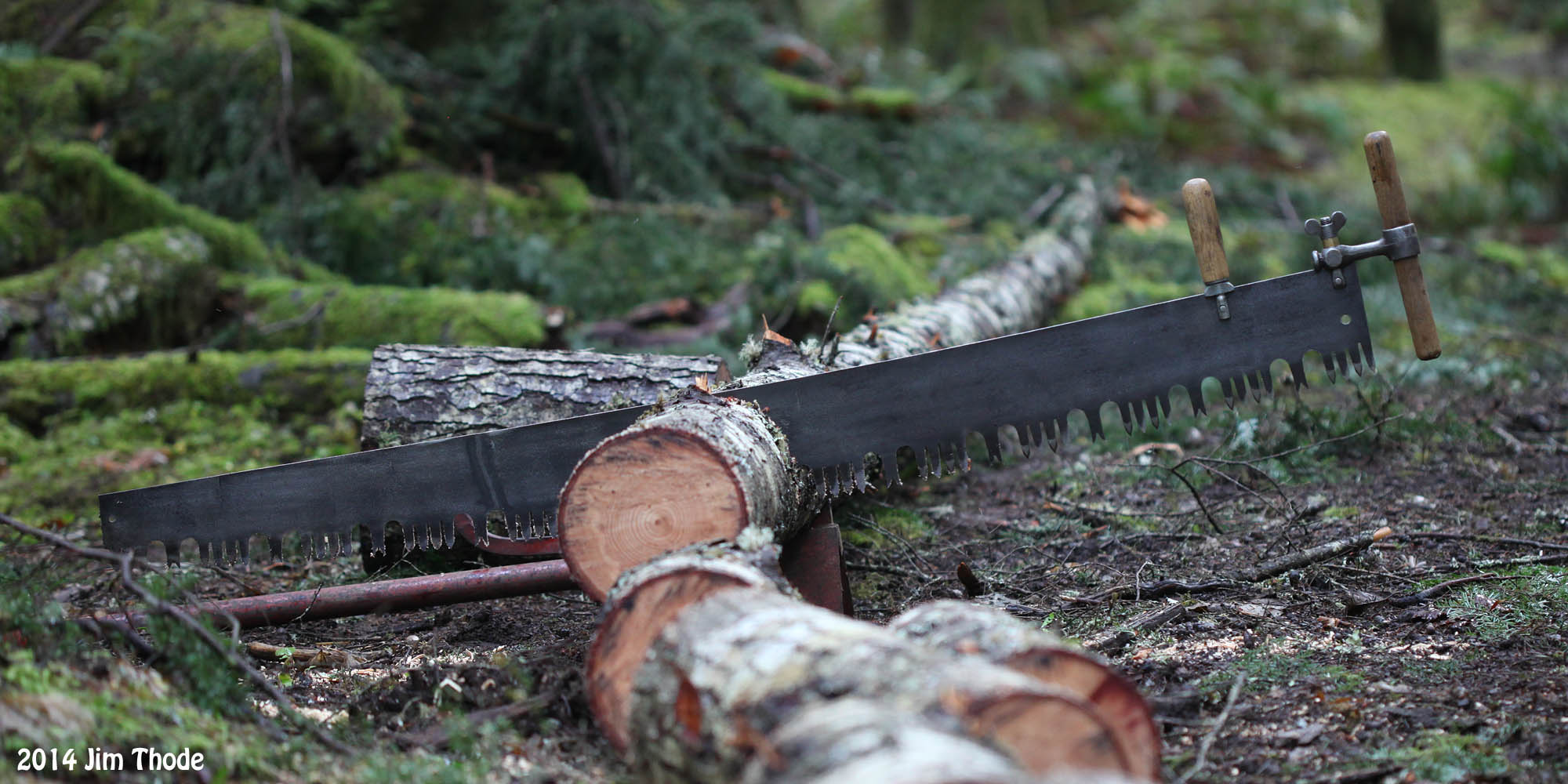I don't see how the negligible weight of an auxiliary handle would do much to improve the efficiency of a crosscut saw in one-man mode, especially on a short saw. It will prevent you from taking a full stroke back through the kerf, and in two man mode, limit your cut to less than half the distance between the two auxiliary handles. Double bucking with a short saw just about guarantees that your partner will get his knuckles banged against the log on the return stroke.
It's an inexpensive hobby until you start lusting after NOS blades. I file them up and pass them along to trail maintainers. Almost everyone who approaches me for a saw wants a one-man. Must be something about individualism or self sufficiency.




















